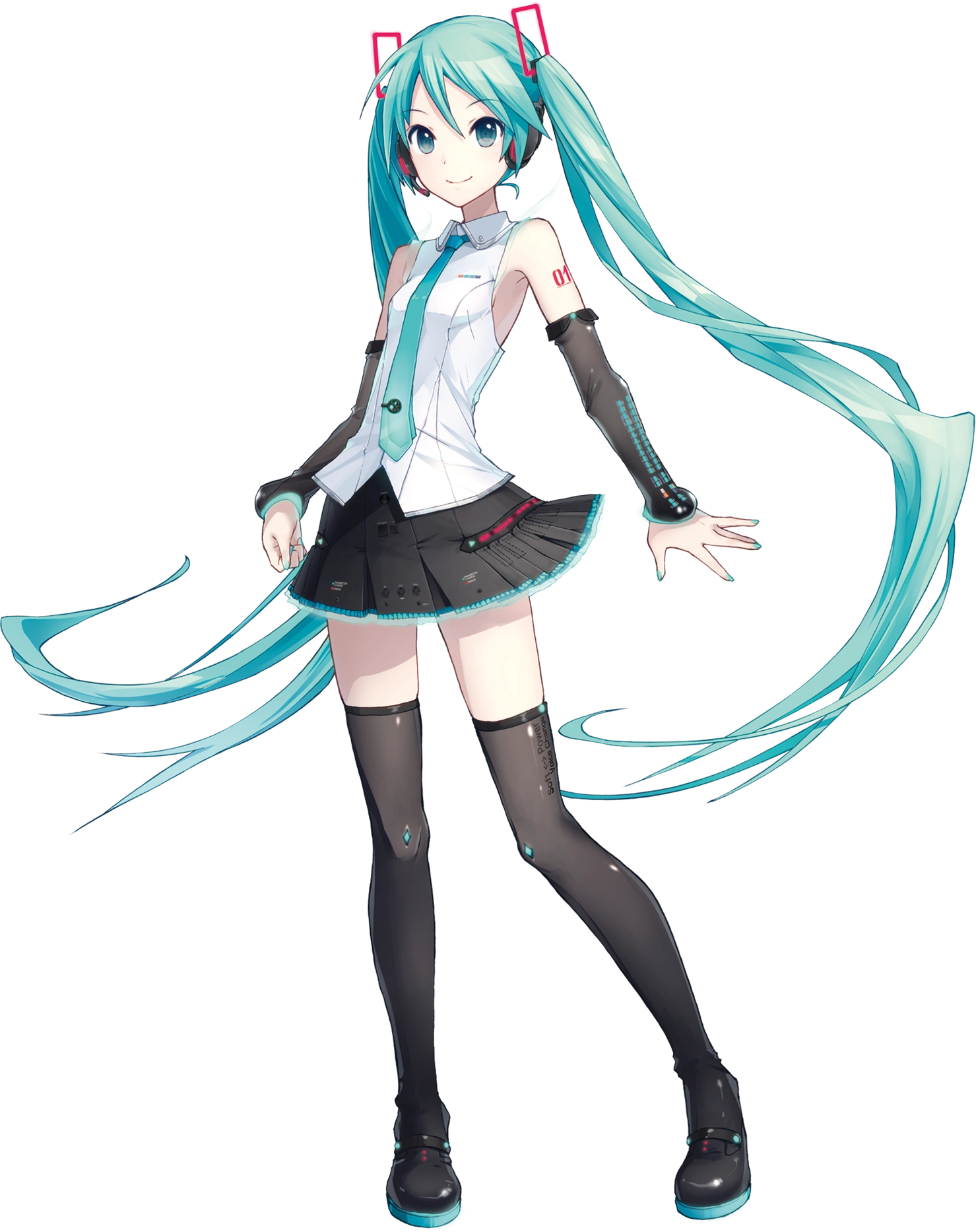If you’ve found yourself browsing the internet, (or have talked to me at all) you’ve most likely come across Vocaloids. They were at the height of their popularity in the late 2000s and early 2010s, although these virtual pop stars still have massive fanbases. So what exactly are Vocaloids, and why are so many people interested in them?
“Vocaloid” is the name of a singing voice synthesizer developed in a joint research project led by Kenmochi Hideki at the Pompeu Fabra University in Barcelona, Spain. It originally wasn’t even going to become a finished product, but Yamaha picked up the project and released it to the public commercially in 2004, which is, funnily enough, the year I was born! :0
The software works by gathering data from voice providers and places all the recordings from the provider into a voice bank. This allows producers to generate singing and speaking by typing in words and creating melodies! It works similarly to Siri or Cortana on your phone. This means a music artist can create vocals without using a real singer and has more control over their project. Cool, right?
In my opinion, the main appeal of Vocaloid is the unique sounding vocals and the emphasis on community. Anyone can create with Vocaloid, and every song that’s created adds to a growing list of performances by the virtual avatars. Vocaloid concerts even exist! Holograms of these virtual singers can be projected on stage, and music made by dozens of producers will be “sang” by these characters throughout the night. Hatsune Miku, who I will talk about more later on, opened for Lady Gaga and was even scheduled to perform at Coachella! That was before Covid-19 shut the event down, of course. More recently, Ashnikko used Hatsune Miku in her song Daisy 2.0, which blew up on TikTok and other social media platforms. Clearly, Hatsune Miku isn’t a small name in North America anymore.
(A clip from Miku Expo in Toronto!)
The Crypton Future Media Vocaloids even have their own series of rhythm games, Project Diva. These games feature songs created by independent creators and original 3D animated dances for each one with several different Vocaloids from Crypton, including Hatsune Miku, Megurine Luka, Kaito, and Kagamine Rin and Len!
I guess I should clarify now that every Vocaloid voice has an avatar to represent the voice singing. This is also one of the pulling factors when people get into Vocaloid music. The songs are being sung by a colorful and fictional characters that can be placed in so many creative settings! The most recognizable one is, obviously, Hatsune Miku. 
Miku’s blue pigtails are one of the most iconic and recognizable symbols in internet culture and pop itself. Miku is inarguably the most popular Vocaloid, and you’ve probably heard her voice before. Remember Nyan Cat? That was Miku. Leekspin/Levan Polka? Also Miku. Hatsune Miku’s constant prevalent status in internet memes (even today) has kept her in the view of western audiences. The most popular songs using her voicebank that you may have heard before are “Rolling Girl” (ローリンガール) by Wowaka, “World is Mine” (ワールドイズマイン) by Ryo, “Love Me! Love Me! Love Me!” (愛して愛して愛して) by Kikuo, and an internet CLASSIC, “Triple Baka” (驫麤~とりぷるばか~) by LamazeP. If you’ve listened to these before, then you already know how versatile Miku’s voice and the themes in music created with her is. (And if you haven’t, feel free to watch the videos linked below. Another cool aspect of Vocaloid is its impressive animated music videos, so if you want the full experience, make sure to watch some!)
CW: “Love Me! Love Me! Love Me!” includes graphic imagery and flashing lights.
Miku also has an English version with lesser known songs using it. Thanks to producers who create original music with Vocaloid, it’s growing more popular in the west and with English-speaking audiences. Some you might have heard are “Miku” by Anamanaguchi, “Propaganda!” by Crusher-P, “Goodbye” by CircusP, and “Entomologists” by Ghost and Pals. Excluding just Miku songs, you’ve probably heard “ECHO” by Crusher-P using Gumi, “Honey I’m Home” by Ghost and Pals using Dex, and “Last of Me” by CircusP using Megurine Luka.
CW: Goodbye contains depictions of depression and attempted suicide. I still wanted to include this one because of how beautiful the AMV is and how big of a staple it is in the English Vocaloid community.
CW: ECHO contains rapid flashing lights.
As you can see, Vocaloid serves as a innovative tool for creators all over the world. If you’re still hesitant about listening because virtual pop stars seem weird or scary to you, that’s perfectly fine! But who knows, you might fall in love with the unique and electric feel of not only the music, but the community as well. We welcome you with open arms. 🙂
Good explanation of it: I love Echo so much it’s such a good song